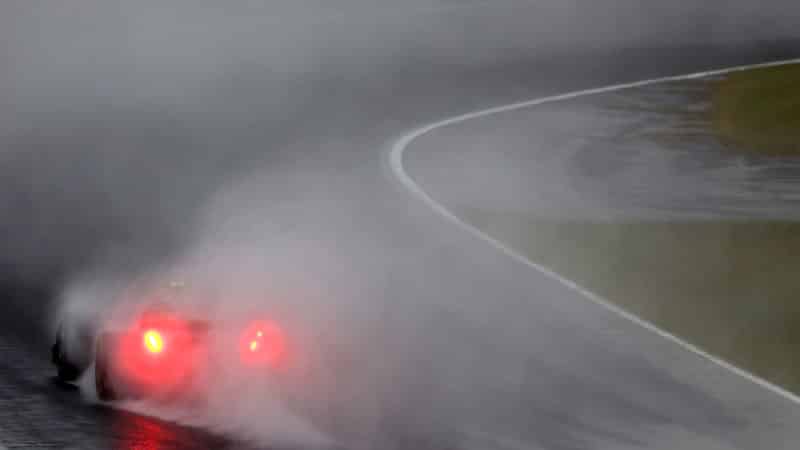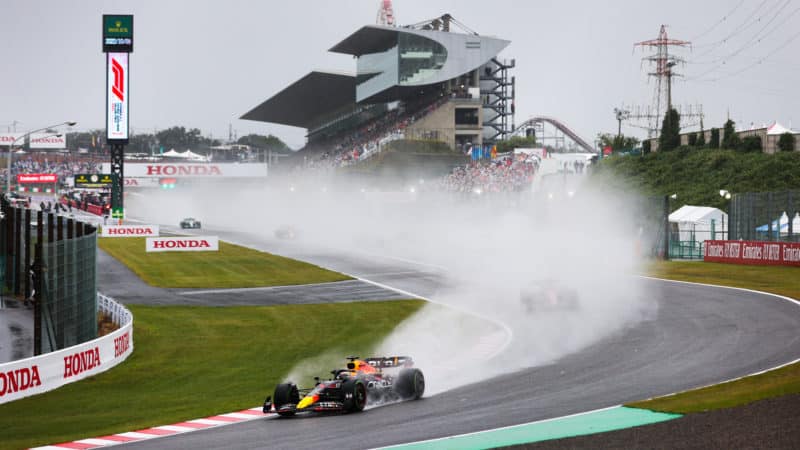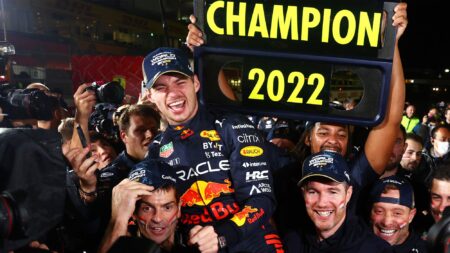Knowing this rain was on its way could the race not have been started earlier?
Global TV timings, the big time difference to Europe and the logistics of getting the spectators there at an unscheduled time made this idea a non-starter.
Could the race not have been started behind the safety car?
There is a stipulation – introduced after the farcical 2021 Belgian Grand Prix – that the race only counts for points once a set number of laps have been made without the safety car. But the safety car would at least have had everyone on full wet tyres rather than intermediates.
Why was everyone on intermediates?
Because they are so much faster than the full-wet tyre in anything other than monsoon conditions. The wet tyre is good only for clearing water when behind the safety car.
So with those questions hanging in the air, everyone waited and it looked for a time as if there just wasn’t going to be a break in the weather before darkness. But eventually at 4.15pm the safety car led the wet-shod pack around in the order they’d been as the race was red-flagged: Verstappen, Leclerc, Perez, Esteban Ocon, Lewis Hamilton, Fernando Alonso, George Russell, Daniel Ricciardo, Yuki Tsunoda, Mick Schumacher, Lance Stroll, Kevin Magnussen, Lando Norris, Valtteri Bottas, Nicholas Latifi, Sebastian Vettel, Zhou Guanyu and Gasly.
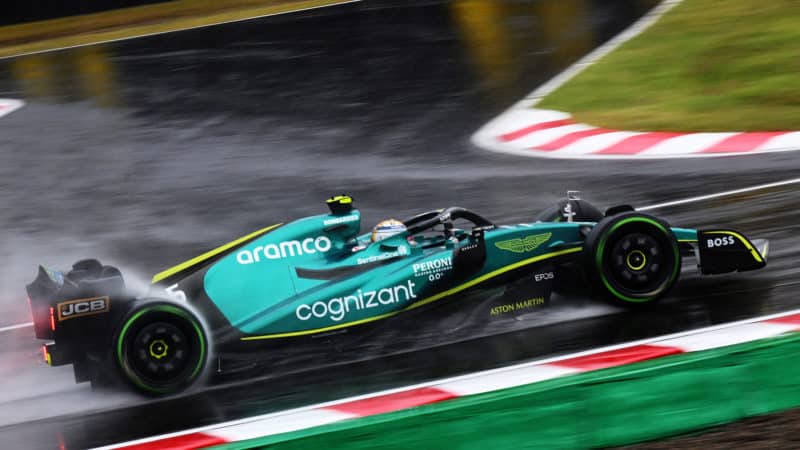
Early switch to inters reversed Vettel’s fortunes in the race
Clive Mason/Getty Images
An hour before, Vettel had been spun onto the grass at Turn 1 in the gloom by contact with Alonso. Zhou had spun out of the hairpin.
After three laps the safety car came in and it was clear already that despite a few no-go areas of standing water offline, the track was ready for inters. Latifi and Vettel followed the safety car into the pits as Verstappen and Leclerc took up where they’d left off, leaving Perez far enough behind that Red Bull didn’t even need to stack him as almost everyone pitted the following lap. In the Mercedes pit, Russell had to be stacked behind Hamilton which dropped him many places, only some of which he could make up before the end. Alpine had avoided this scenario by leaving Alonso out for an extra lap, which dropped him behind Vettel who, along with Latifi, had made up many places by that decisive early stop. Alpine’s solution’s for Alonso definitely worked out better than Merc’s for Russell though.
Only Schumacher stayed out on the wets, leading and hoping for a safety car. Verstappen passed him to retake the lead just before Turn 1, leaving the pursuing Leclerc stuck behind the Haas up through the Esses and thus giving Verstappen a handy gap. Leclerc pushed on, matching Verstappen’s times for three laps or so – but that did for the Ferrari’s front tyres. As Verstappen disappeared into a class of his own, increasingly far ahead of everyone, Leclerc lost big chunks of pace thereafter and was steadily caught by Perez, the beginning of a dice between them which would go right to the end.

Schumacher succumbs to Verstappen as the lead changes hand
LAT via Haas
Ocon and Hamilton had their own sometimes-thrilling dice some way back from there, the high-winged Mercedes unable to pass the low-downforce Alpine. They’d finish that way in fourth and fifth.
Russell, having passed a couple of slower cars between Turns 6-7 at the top of the Esses, was catching Alonso, who was stuck behind Vettel. So Alpine brought him in for fresh inters, which were around 4sec faster than the used items and he was able to catch and pass Russell and get himself onto the back of Vettel’s sixth place once more into the final couple of laps, the two champions giving a fantastic demonstration of wheel-to-wheel racing. They would cross the line side-by-side, Vettel 0.011sec ahead.
With the race timing out on lap 27 because of the three hour window in which a grand prix must now be completed, Verstappen crossed the line 26sec clear. Leclerc, under intense pressure from Perez, ran straight on at the chicane, rejoined still ahead but was penalised 5sec. In dropping him to an official third the penalty ensured – together with the awarding of full points – Verstappen took the title.
Why the confusion about the points?
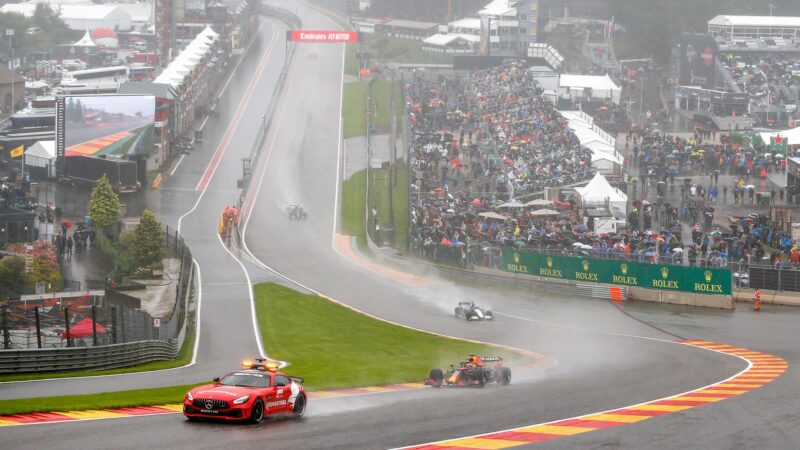
Spa 2021 ‘race’ brought a rewrite of the points-scoring rules
DPPI
The points system for races which do not achieve full distance was revised after the Spa ’21 farce when points were awarded for a few laps behind the safety car. Where the race timed out – 27 laps – would normally have been good for half-points, and in the immediate aftermath of the race that’s what everyone assumed would be awarded.
The announcement from race control that full points applied led everyone to re-read this part of the regs. It was true that they stipulated the points score only for races which could not be restarted. This race had restarted, therefore full points. That’s not what the intention of the regulation was, but that’s what it said. So full points – and the regulation will be rewritten, properly this time, ahead of the next FIA World Council meeting.

